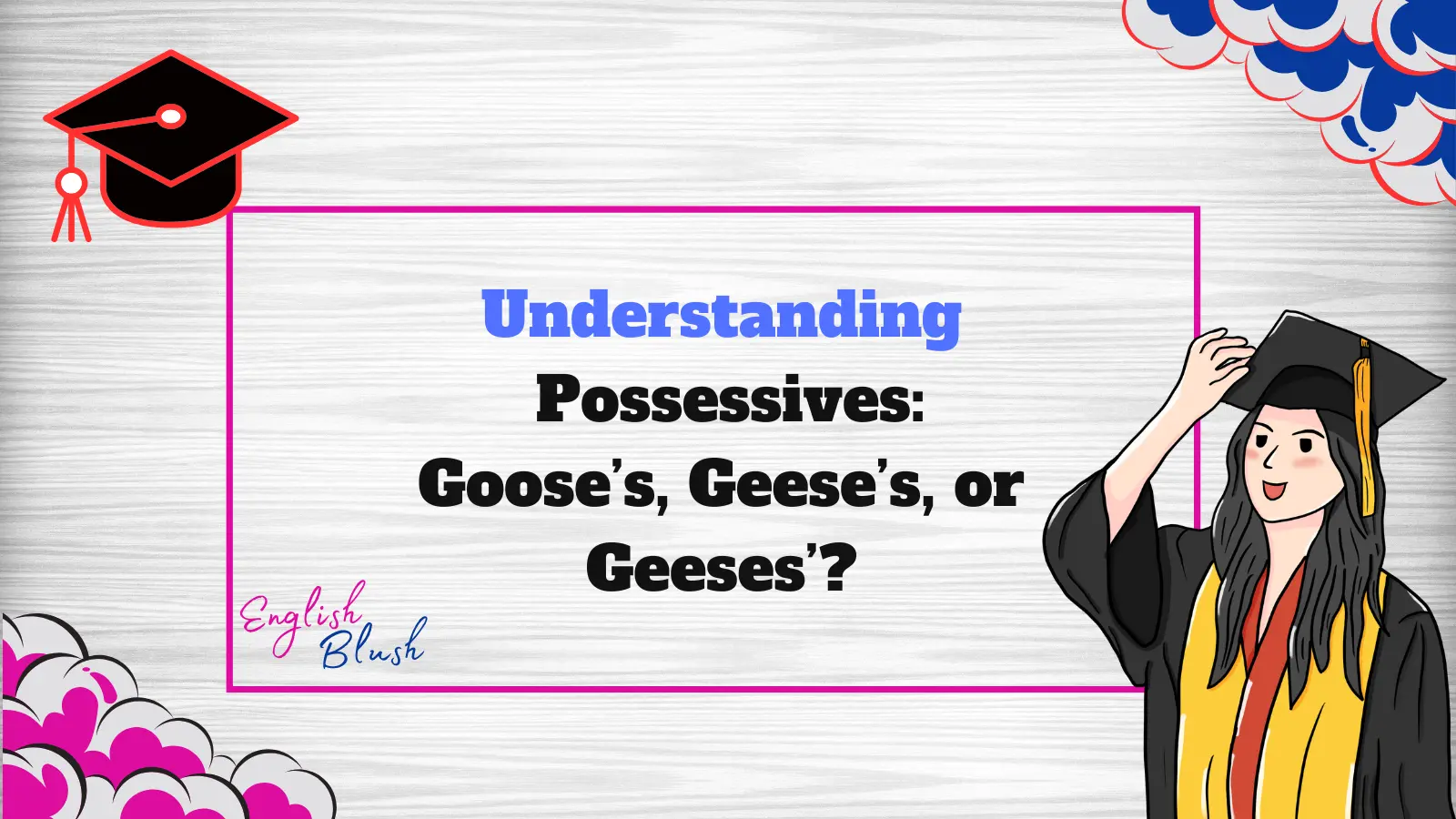When we talk about something that belongs to a goose or geese, we use something called possessive nouns. In this article, we will look at three different ways to show possession:
- Goose’s
- Geese’s
- Geese’s
Let’s break them down in simple terms so that they are easy to understand!
What is Possession?
Possession is when something belongs to someone or something. For example:
- Goose’s feathers means the feathers belong to the goose.
- Geese’s feathers means the feathers belong to the geese.
Now, let’s look at the differences between the possessive forms of “goose” and “geese”.
Singular Possessive: Goose’s
The word goose is singular, which means it refers to one bird. To show that something belongs to the goose, we add ‘s at the end of the word.
Example:
- Goose’s nest = The nest that belongs to the goose.
- Goose’s wings = The wings that belong to the goose.
Plural Possessive: Geese’s
The word geese is plural, which means it refers to more than one goose. To show possession for more than one goose, we add ‘s to geese.
Example:
- Geese’s honking = The honking that belongs to the geese.
- Geese’s feathers = The feathers that belong to the geese.
Why not “Geese’s” for more than one goose?
You might wonder, “Why do we say geese’s instead of geeses’?” The answer is simple: the correct plural of “goose” is geese. While it might seem like we need to add ‘s for the plural form too, the correct form is geese’s.
Understanding Possessive Forms with a Table
Here’s a quick table to help you see the differences:
| Type of Possession | Word | Example |
|---|---|---|
| Singular Possessive | Goose’s | The goose’s feathers (The feathers of one goose) |
| Plural Possessive | Geese’s | The geese’s nest (The nest of multiple geese) |
What About “Geese’s” vs. “Geese’s” (The Same Word)?
At first, it might look like there is a problem with “geese’s” appearing twice in this table. But here’s the trick:
- Goose’s = One goose owns something.
- Geese’s = Many geese own something.
Common Mistakes
- Geese’s vs. Geeses’: The word geese’s is correct when showing possession for more than one goose. Geese’s already shows the plural form of “goose,” so adding ‘s after “geese” is unnecessary.
- Incorrect: Geese’s’
- Correct: Geese’s
- Goose’s vs. Geese’s: Remember, goose’s is used when talking about one goose, and geese’s is used for more than one goose.
Conclusion
Understanding the possessive forms of “goose” and “geese” is simple once you remember these rules:
- Goose’s is for something that belongs to one goose.
- Geese’s is for something that belongs to more than one goose.
By practicing these rules, you’ll get the hang of using possessives the right way!
I hope this makes the concept of possessive nouns clear for you! Feel free to use the table and examples as a guide whenever you’re unsure about how to show possession with “goose” or “geese”!





